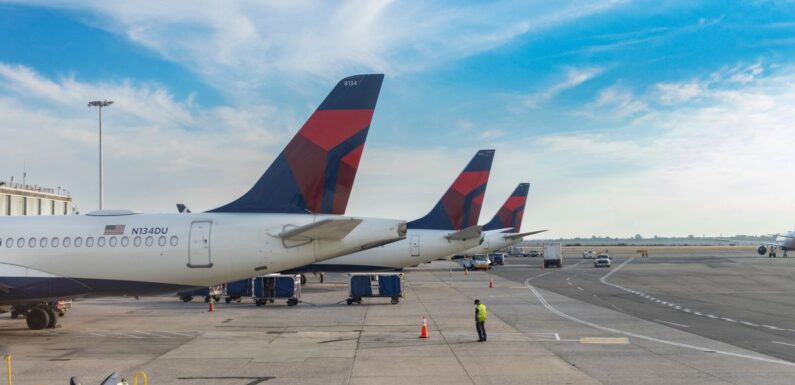
ISTANBUL — Amid the celebration of bullish times at IATA’s Annual General Meeting here last week, aviation leaders warned that delivery delays for aircraft and aircraft parts don’t appear ready to let up anytime soon.
“Suppliers have been far too slow in dealing with supply chain blockages that are both raising costs and limiting our ability to deploy aircraft,” IATA director general Willie Walsh said during his state of the industry address that led off the conference. “Airlines are beyond frustrated. A solution must be found.”
IATA projected airlines globally will make a net profit of $9.8 billion this year, ending three years of pandemic-related losses. That figure represents twice the profit that IATA had anticipated for this year in its previous forecast in December.
In one respect, those figures are buoyed by delivery delays. Forcing airlines to fly less than they’d like reduces market capacity and boosts ticket prices.
But the delays also impede airline growth plans and are forcing some carriers to utilize aircraft, and even aircraft types, that they had hoped to retire by now.
Perhaps even more maddening for carriers, supply chain constraints are impacting their ability to replace parts in a timely fashion, forcing aircraft groundings. And that issue is being exacerbated by reliability problems with new-generation engines produced by General Electric and Pratt & Whitney.
According to Vik Krishnan, an aviation-focused partner for consulting firm McKinsey, the GE Leap and Pratt & Whitney PW1000G are often out of commission more than seven days a month, substantially more than what airlines experience with older and less efficient engines.
Meanwhile, the war in Ukraine has crimped the ability of Boeing and Airbus to acquire titanium, used widely on aircraft due to its combination of durability and lightness, especially on widebodies. Russia is the among the world’s largest titanium producers.
For the two aircraft manufacturers, global supply challenges add up to production shortfalls and slowed production ramp-ups. This year Airbus is targeting 720 deliveries, well below the 863 it delivered in 2019. In the first quarter, Airbus delivered just 127 planes; Boeing delivered 124 aircraft in the first quarter, including 113 737 Max narrowbodies.
Krishnan said both companies are delivering 20 or more fewer narrowbodies per month than they’d like to under normal circumstances. “We’re talking 40 to 50 airplanes a month, just narrowbodies, that the market is currently short of,” he said.
And that doesn’t account for widebody shortfalls, including the multiyear delay for the first delivery of the Boeing 777X, which the U.S.-based aerospace giant pushed backed from 2023 to 2025 as it works toward certification.
The shortfalls equate to airline delivery delays — lots of them.
“When aircraft are delivered six months late, we now consider that on time,” IATA chief economist Marie Owens Thomsen said last week.
To cite one example, in an April financial filing, United said that it expects 56 narrowbodies that were slated for delivery this year to be pushed into 2024 and 40 single-aisle deliveries scheduled for 2024 to be delivered in 2025.
Speaking to reporters in Turkiye, Lufthansa Group CEO Carsten Spohr said the company’s reintroduction of Airbus A380 jet service last week is a prominent example of the impact of aircraft delivery delays. Lufthansa is now flying the A380 between Munich and Boston. “How much more visible and tangible can it be that this is a real problem for us?” he said. “It’s not just on paper. The 380 wouldn’t be flying if the 777 had been on time.”
Spohr also said that Lufthansa would have stopped using the eight Boeing 747-400s in its fleet had 787-9 Dreamliner deliveries been on time.
Lufthansa Group airlines, Spohr said, also have upwards of 10 aircraft on the ground while they await parts.
In Istanbul, other airline CEOs also weighed in on the impact of the parts shortage. Air New Zealand CEO Greg Foran said that the company took delivery of new Airbus A321 aircraft a few months ago. “Literally within a few minutes of them landing, we were taking parts off those planes in order to keep some other ones operating,” he said. Foran added that Air New Zealand is cannibalizing its own aircraft for parts at twice its typical rate.
Air India CEO Campbell Wilson explained just how complicated procuring parts can be. After he took over the carrier last year following its acquisition by the Indian conglomerate Tata Group, the airline sought to get 13 long-grounded Boeing 787s airborne. Doing so required the procurement of 30,000 parts.
Further complicating parts procurement is that airlines are competing against Boeing and Airbus for suppliers’ attention, IATA senior vice president for safety and security Nick Careen said during a presentation here.
Krishnan said the complexity of aircraft industry supply chains means such challenges may linger a while. More than 300 suppliers are needed to build a Boeing 737 Max, he said, and the figure is higher for widebodies. Parts for the aircraft come from more than 50 countries.
“It doesn’t help if 299 of your suppliers are doing great and one isn’t,” Krishnan said. “It’s not like you can send a plane out with a few parts missing. Unfortunately, with a supply chain, the longest pole in the tent is that one supplier that is unable to meet a production rate ramp.”
Source: Read Full Article









